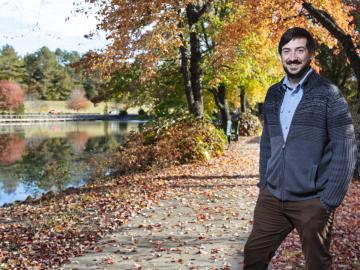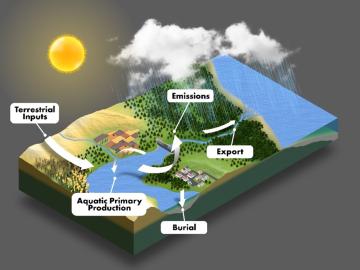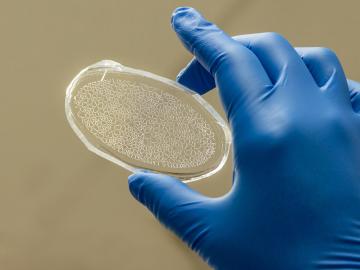
Filter News
Area of Research
- (-) Biology and Environment (96)
- (-) Neutron Science (19)
- Advanced Manufacturing (4)
- Biology and Soft Matter (1)
- Building Technologies (2)
- Computational Biology (1)
- Computational Engineering (2)
- Computer Science (9)
- Electricity and Smart Grid (2)
- Energy Science (101)
- Energy Sciences (1)
- Fusion and Fission (20)
- Fusion Energy (10)
- Isotopes (2)
- Materials (40)
- Materials for Computing (12)
- Mathematics (1)
- National Security (26)
- Nuclear Science and Technology (27)
- Nuclear Systems Modeling, Simulation and Validation (1)
- Quantum information Science (7)
- Sensors and Controls (1)
- Supercomputing (55)
News Type
News Topics
- (-) Clean Water (13)
- (-) Coronavirus (10)
- (-) Environment (79)
- (-) Grid (2)
- (-) Machine Learning (8)
- (-) Mathematics (3)
- (-) Nanotechnology (5)
- (-) Nuclear Energy (2)
- (-) Quantum Science (2)
- (-) Security (2)
- 3-D Printing/Advanced Manufacturing (6)
- Artificial Intelligence (10)
- Big Data (8)
- Bioenergy (41)
- Biology (60)
- Biomedical (20)
- Biotechnology (9)
- Chemical Sciences (7)
- Composites (2)
- Computer Science (20)
- Energy Storage (6)
- Exascale Computing (4)
- Fossil Energy (1)
- Frontier (3)
- High-Performance Computing (16)
- Hydropower (9)
- Materials (10)
- Materials Science (12)
- Mercury (7)
- Microscopy (9)
- National Security (3)
- Neutron Science (77)
- Partnerships (1)
- Physics (3)
- Polymers (2)
- Quantum Computing (1)
- Simulation (10)
- Space Exploration (2)
- Summit (8)
- Transportation (3)
Media Contacts

Matthew Craig grew up eagerly exploring the forest patches and knee-high waterfalls just beyond his backyard in central Illinois’ corn belt. Today, that natural curiosity and the expertise he’s cultivated in biogeochemistry and ecology are focused on how carbon cycles in and out of soils, a process that can have tremendous impact on the Earth’s climate.

Millions of miles of pipelines and conduits across the United States make up an intricate network of waterways used for municipal, agricultural and industrial purposes.

Tomás Rush began studying the mysteries of fungi in fifth grade and spent his college intern days tromping through forests, swamps and agricultural lands searching for signs of fungal plant pathogens causing disease on host plants.

ORNL researchers are deploying their broad expertise in climate data and modeling to create science-based mitigation strategies for cities stressed by climate change as part of two U.S. Department of Energy Urban Integrated Field Laboratory projects.

ORNL has provided hydropower operators with new data to better prepare for extreme weather events and shifts in seasonal energy demands caused by climate change.

A new paper published in Nature Communications adds further evidence to the bradykinin storm theory of COVID-19’s viral pathogenesis — a theory that was posited two years ago by a team of researchers at the Department of Energy’s Oak Ridge National Laboratory.

Global carbon emissions from inland waters such as lakes, rivers, streams and ponds are being undercounted by about 13% and will likely continue to rise given climate events and land use changes, ORNL scientists found.

Scientists at ORNL have created a miniaturized environment to study the ecosystem around poplar tree roots for insights into plant health and soil carbon sequestration.

Chemical and environmental engineer Samarthya Bhagia is focused on achieving carbon neutrality and a circular economy by designing new plant-based materials for a range of applications from energy storage devices and sensors to environmentally friendly bioplastics.

Science has taken Melanie Mayes from Tennessee to the tropics, studying some of the most important ecosystems in the world.


